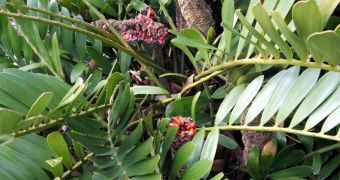Scientists at the University of Florida in Gainesville (UFG) were recently able to gain more insight into the origins of angiosperms, a group of flowering plants that make up more than 90 percent of all land-based vegetation on the planet.
The reason why they evolved to be so successful in covering the vast majority of possible environments is that they benefit from what experts refer to as an evolutionary innovation, which gave them an extra edge against other types of plants.
According to the fossil record and other sources, flowering plants first developed more than 130 million years ago, and then quickly began to diversify and spread, eventually covering the Earth.
This family includes everything from the pineapple lily of Africa to the swamp bottlebrush of western Australia, and nearly everything in between. Their genetic origins have fascinated experts for years.
Recently, UFG investigators were able to make important headway in this research, as evidenced by a paper they published in the latest issue of the esteemed journal Proceedings of the National Academy of Sciences (PNAS).
One of the most interesting conclusions of the research is that an original plant similar to the water lily may have kick-started the entire evolutionary chain that led to the development of angiosperms.
“Water lilies and avocado flowers are essentially 'genetic fossils' still carrying genetic instructions that would have allowed the transformation of gymnosperm cones into flowers,” explains Doug Soltis.
The UFG biologist is one of the co-lead researchers on the new PNAS paper. He studied these plants in relation with gymnosperms, the other major vegetation group. These plants contain seed-bearing bodies, and include conifers and cycads, such as the pine tree.
“We show how the first flowering plants evolved from pre-existing genetic programs found in gymnosperm cones and then developed into the diversity of flowering plants we see today,” the expert explains.
“A genetic program in the gymnosperm cone was modified to make the first flower,” he goes on to say. But the main mystery of it all was determining how angiosperms, which carry both male and female reproductive systems on the same plants, evolved from gymnosperms.
In the latter group, a cone can be either male or female, and never both. The team conducted the work on water lily, avocado, California poppy, the small flowering plant called Arabidopsis and the cycad Zamia.
The work added support for the single cone theory, which holds that angiosperms developed from a a male gymnosperm cone that had almost everything a flower now has, in terms of its genetic wiring.
“We extracted an essential genetic material, RNA, from the flowers' specific floral organs and in the case of Zamia, its cones, to see which genes were active,” says UG evolutionary geneticist Pam Soltis.
He is also a curator at the Florida Museum of Natural History, and a co-lead investigator on the research.
“In early flowers, a stamen is not much different genetically speaking than a tepal. The clearly distinct floral organs we all know and love today came later in flowering plant evolution – not immediately,” adds Doug Soltis.
He adds that understanding the genetic switches in early angiosperm flowers could eventually lead to improvements in disciplines such as medicine or agriculture.
The new research was funded by the US National Science Foundation's (NSF) Directorate of Biological Sciences.

 14 DAY TRIAL //
14 DAY TRIAL //